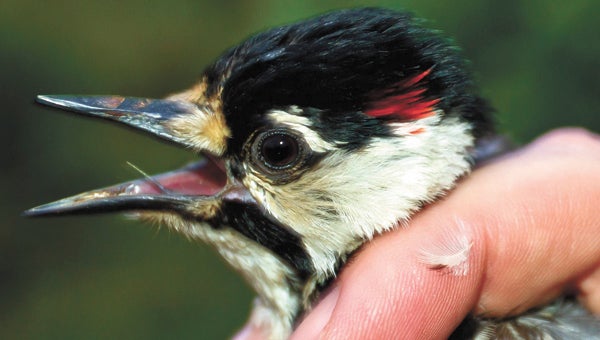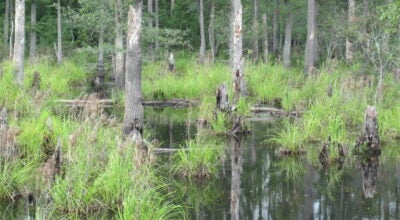Woodpeckers nesting on refuge
Published 10:00 pm Friday, April 22, 2016

A biologist holds a red-cockaded woodpecker during a transport operation last year (Bryan Watts photo)
The mission to re-introduce an endangered bird species to the Great Dismal Swamp National Wildlife Refuge is going well, but biologists can’t call it a success until the birds breed.
Refuge biologist Kelly Morris told about 16 guests in a presentation at the refuge’s annual Birding Festival on Friday that at least one pair of red-cockaded woodpeckers has begun to prepare a nest in a pre-fabricated cavity installed in a pine tree on the refuge.
“I’m really excited to be on this project,” Morris told the group of birders, some of whom traveled from as far away as Oregon for the festival.
Eight of the birds were transplanted to the refuge in October from other populations in North and South Carolina, Morris said.
The birds were inserted in nesting cavities made especially for them in a stand of pond pine southeast of Lake Drummond, Morris said. The red-cockaded woodpecker is the only bird in North America that nests in live trees.
Since they were released, at least two haven’t been seen, Morris said. But cameras inserted into the cavities periodically have detected wood chips — a sign of building a nest — in at least one of the cavities earlier this week, Morris said. She hopes to see eggs soon.
The red-cockaded woodpecker used to be fairly plentiful in the swamp and ranged from New Jersey to Florida. But now, the northernmost population of the birds is in Sussex County. The population now in the refuge is the only other one in Virginia.
“They used to be here, and they used to breed,” Morris said. The species was last seen breeding in the swamp in 1961, and was last seen on the refuge in 1974.
Having many populations in different areas is key to the survival of a species, Morris said. If a catastrophic event such as a hurricane were to wipe out some populations (“That’s a very viable possibility,” Morris said) others in different areas can contribute to the survival.
Red-cockaded woodpeckers appear similar to the hairy and downy woodpeckers but can be distinguished by a white patch on their cheeks and ladder-type stripes all the way down their backs. The red “cockade” on their heads is generally only visible when they are young.
The birds are endangered because of habitat destruction, Morris said. Their behavior also contributes to slow reproduction rates; only one pair in a population cluster actually breeds.
The Birding Festival continues today at the refuge and includes more presentations as well as guided bird walks, a bird banding station, canoe birding, motorized boat tours, nature crafts and exhibits, a nature photography workshop, a bus tour to Lake Drummond and more.
Call 986-3705 for more information. Its headquarters is located at 3100 Desert Road.






